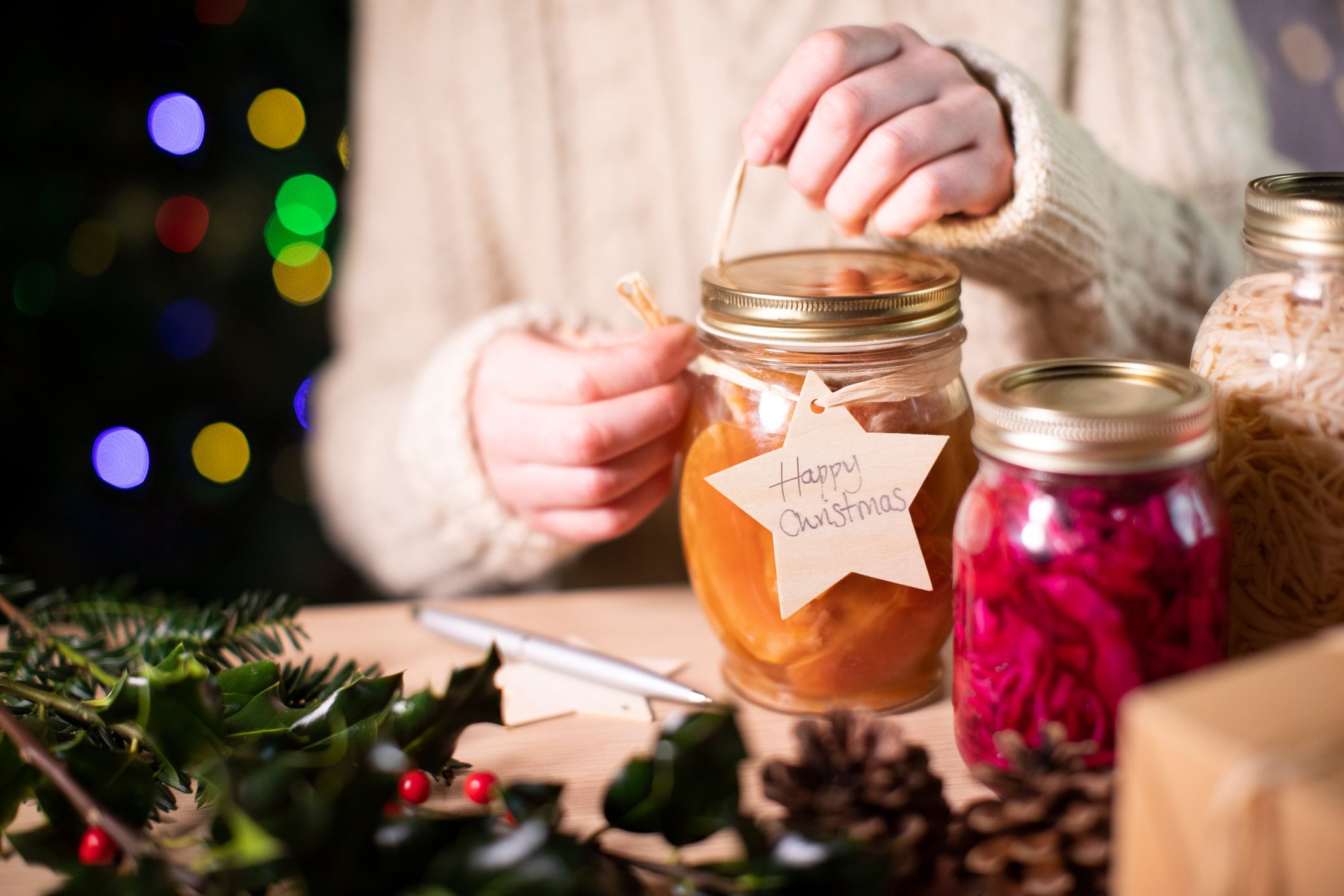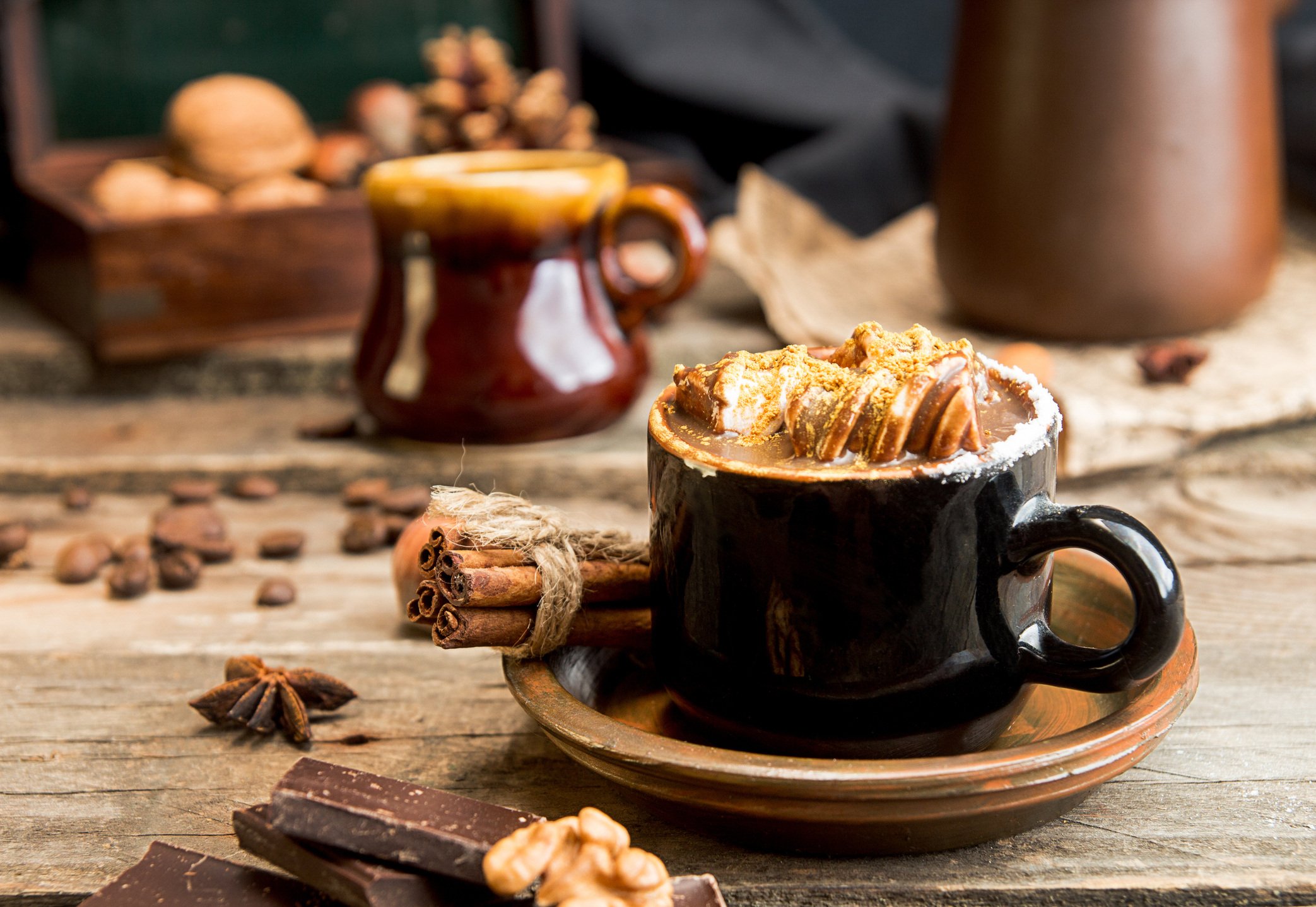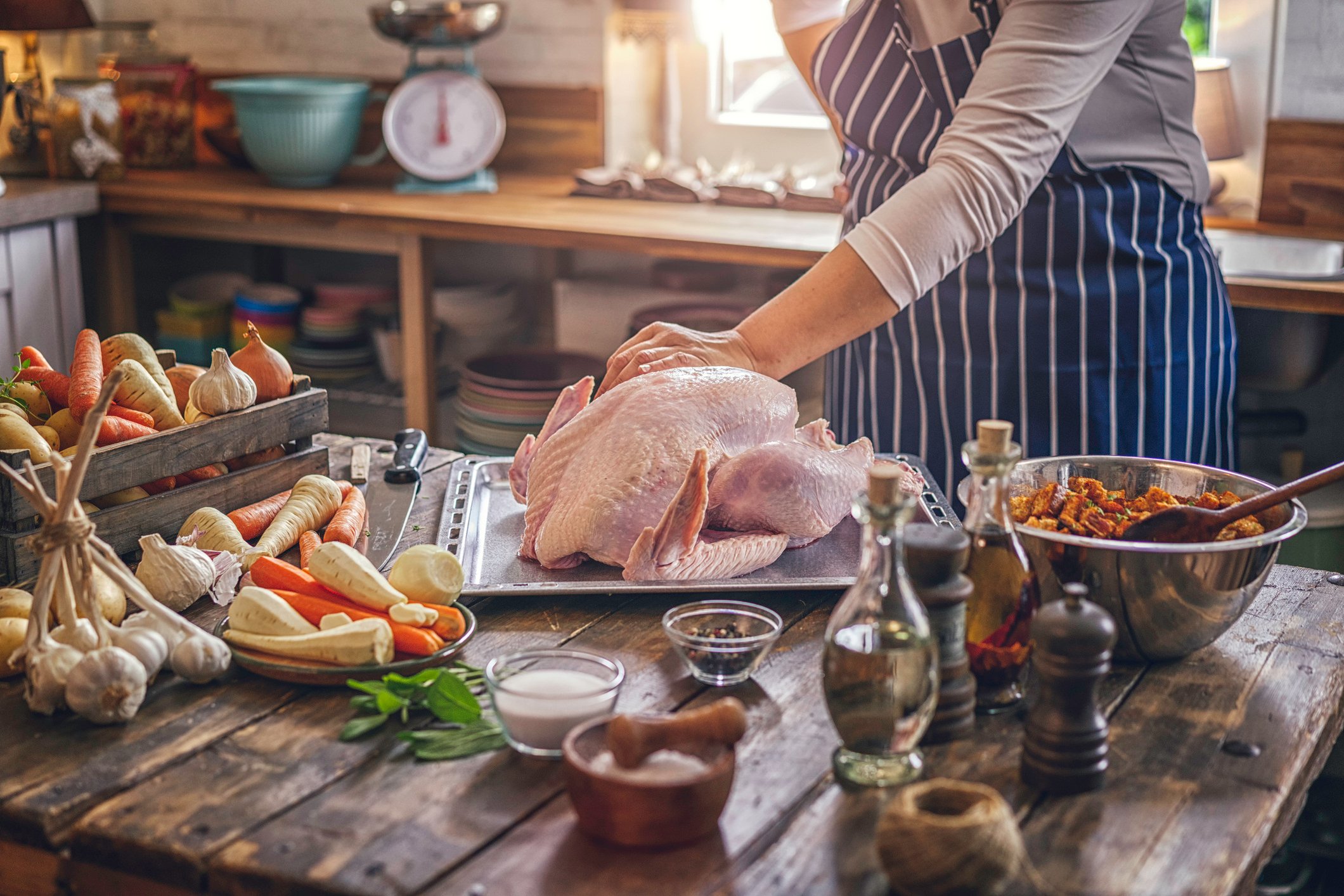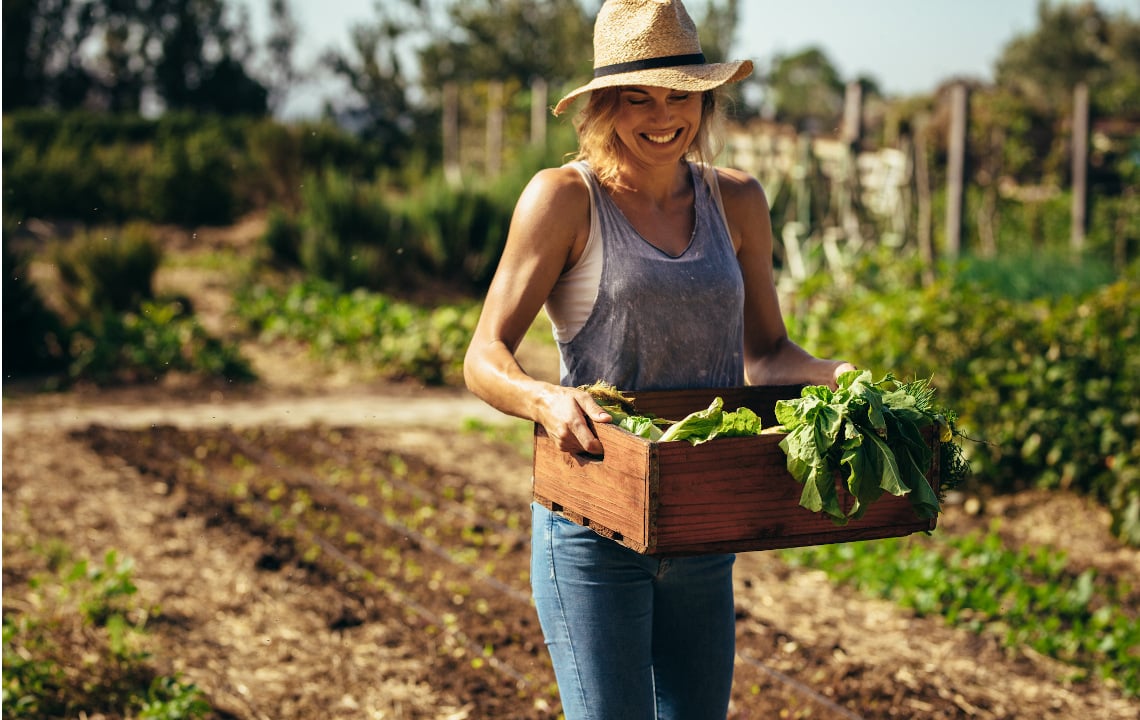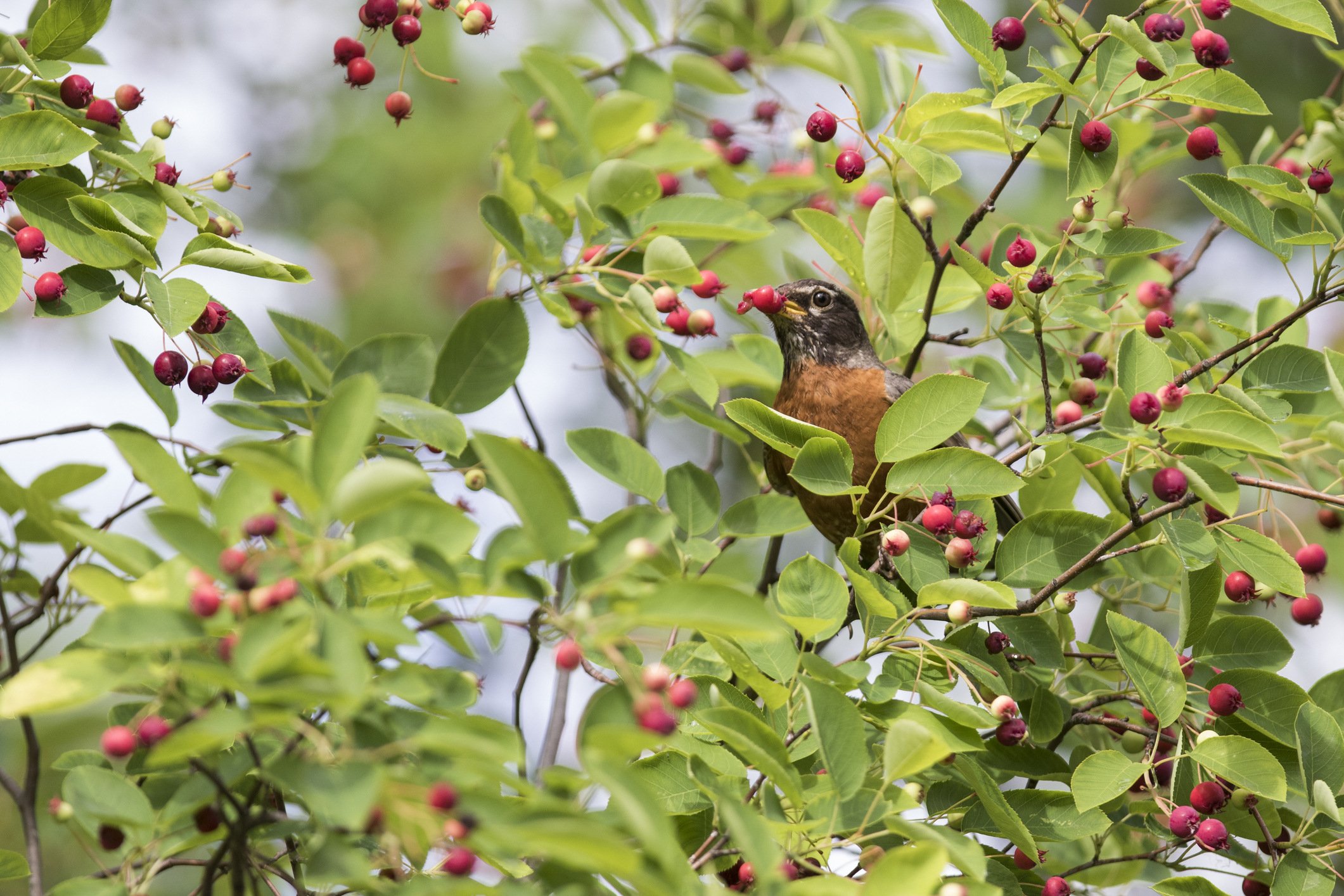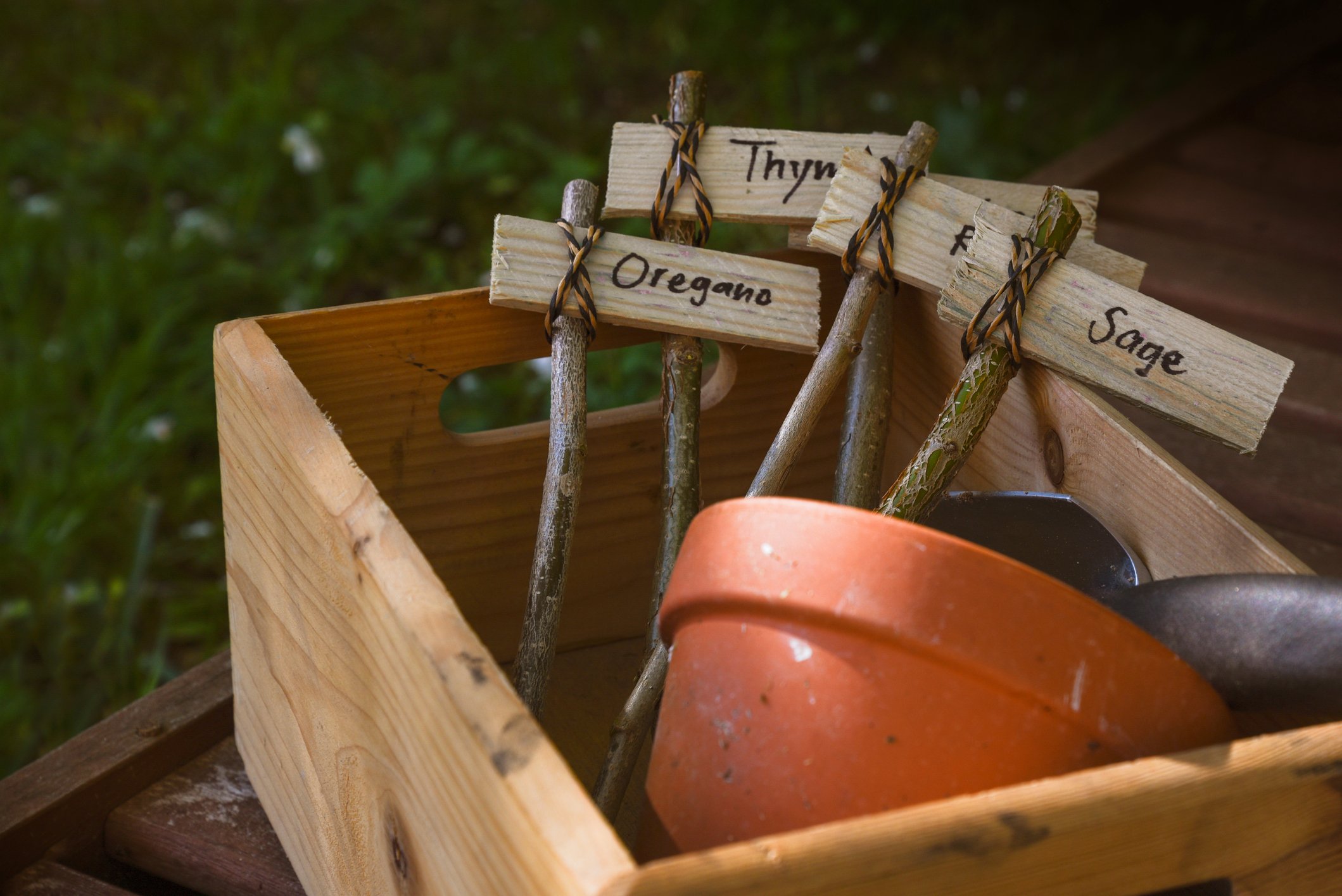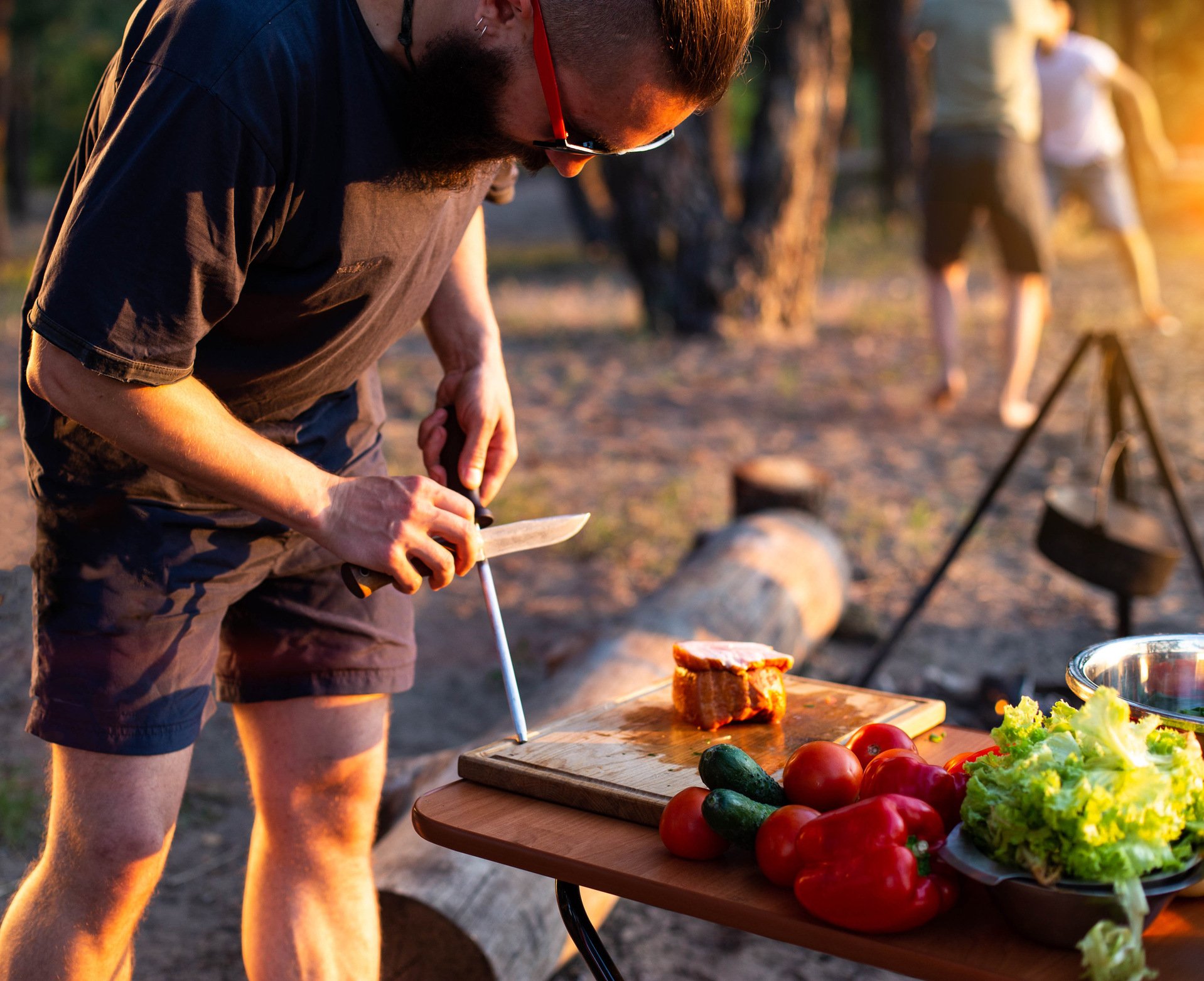There’s nothing better than food cooked with a wood fire, including cast iron cooking over an open flame. Master the art of preparing wood-fired meals with these techniques.
Since ancient times mankind has used wood as fuel to cook food. We don't know how or when this practice began, but there is a devoted following that persists today. We love traditional methods of preparing food and continue to use the time-honored recipes and ways of using this most natural fuel to cook our food.
Cooking with Fire
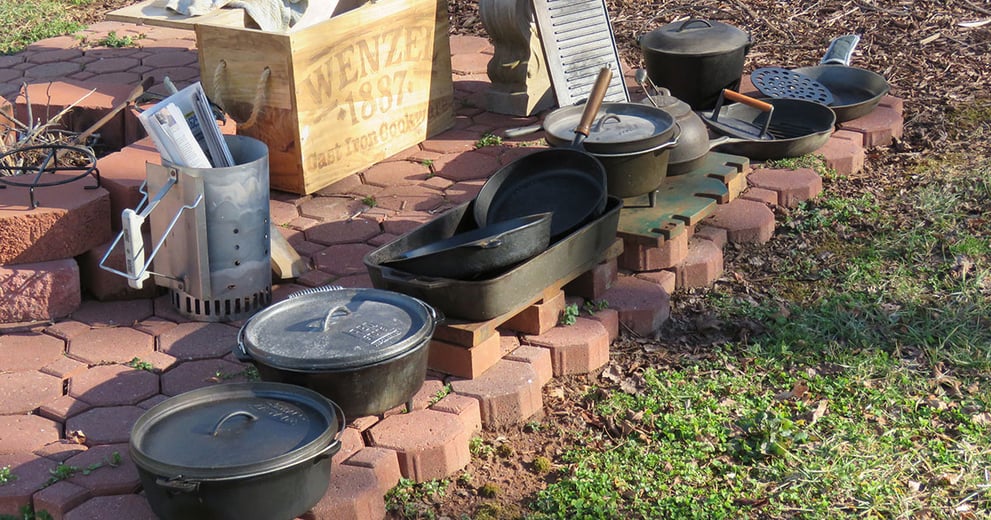
There are still those devoted followers who hunker down around a wood fire and cook a meal in the old way. Campers, hikers, hunters, fishermen and others are part of a tribe honoring the past by using wood as fuel. There is something about wood smoke that makes its way into the very core of the outdoor person. Perhaps it is the subconscious hearkening back to simpler times. It is a real thing with large numbers of devotees who routinely gather around the coals to prepare a meal.
I must confess to being included in that number. My workshop is the home for all manner of cast iron frying pans, Dutch ovens and numerous other tools utilized in outdoor cooking.
I have experimented with reflector ovens of the "homemade" variety and in the distant past have spent the night on the river, cooking catfish on a green willow stick over the coals of a wood fire. As a matter of fact, in my childhood days, an assortment of wild creatures found their way onto a wooden spit over an open fire.
Attributes of Cast Iron Cooking
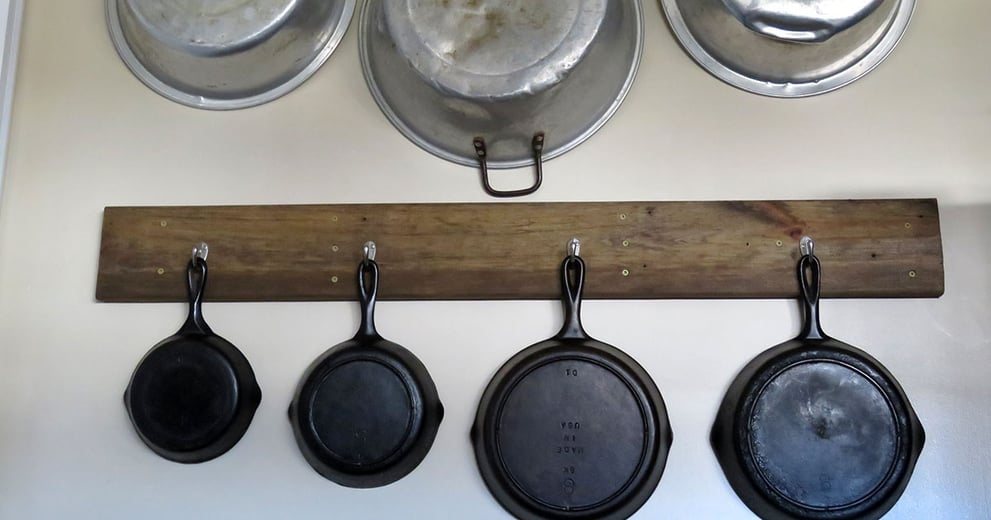
Having moved beyond those formative years, I have graduated to more traditional methods, using cast iron, in most cases over various types of wood coals or charcoal. Dutch ovens are some of the most versatile cooking vessels to be found. They are available in almost any size desired and can prepare stews, bake bread and cook scrumptious pies. The best ovens have legs to keep them from compressing the coals and smothering them. The lids also have a flange that allows hot coals to be placed on top and keep them from rolling off.
Heat Regulation for Dutch Oven Cooking
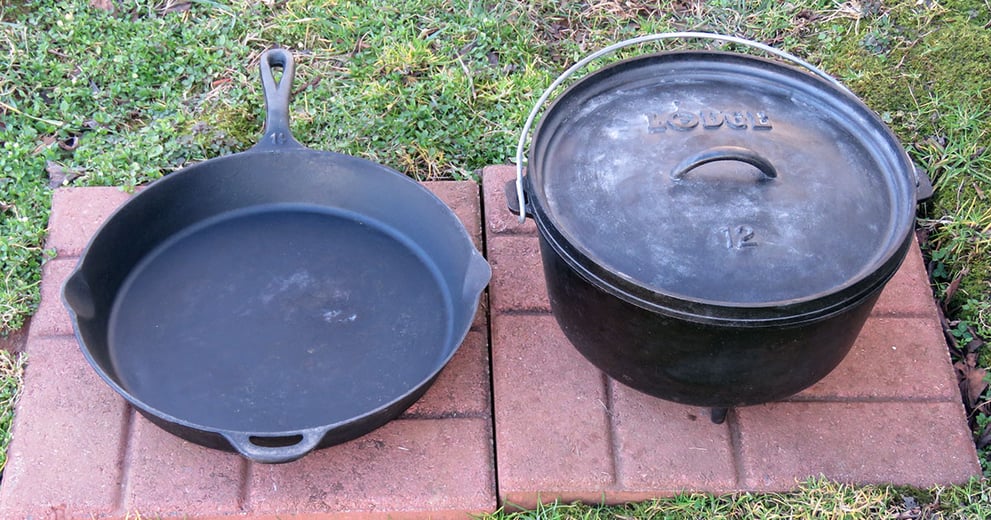
Here are two rules of thumb for cooking over coals with a Dutch oven:
- Since heat rises, place more coals on top to provide an even temperature throughout the oven for proper cooking. Place 1/3 of the charcoal under the oven and 2/3 on the top.
- Double the width of the oven’s diameter to determine how many briquettes to use. For example, for a 10” oven, start with 20 briquettes, or for a 12” oven, start with 24.
Heat may be regulated by the number of briquettes you use or by the amount of wood coals you use for cooking. Lodge Manufacturing, established in 1896, is one of the premier companies that manufactures excellent cast iron cookware. Their booklet, “Camp Dutch Oven Cooking 101,” contains a chart that recommends how many charcoal briquettes to use on top and bottom with various size ovens to achieve the desired temperature.
When using a Dutch oven or other cast iron cookware for frying food, heat should only be used under the vessel.
Keep in mind that when cooking outdoors, the ambient temperature will affect the amount of wood coals or charcoal needed to reach the optimum temperature. If it is extremely cold, you may need more than the chart recommends, and likewise, if it is extremely hot, you will need less.
Seasoning Cast Iron
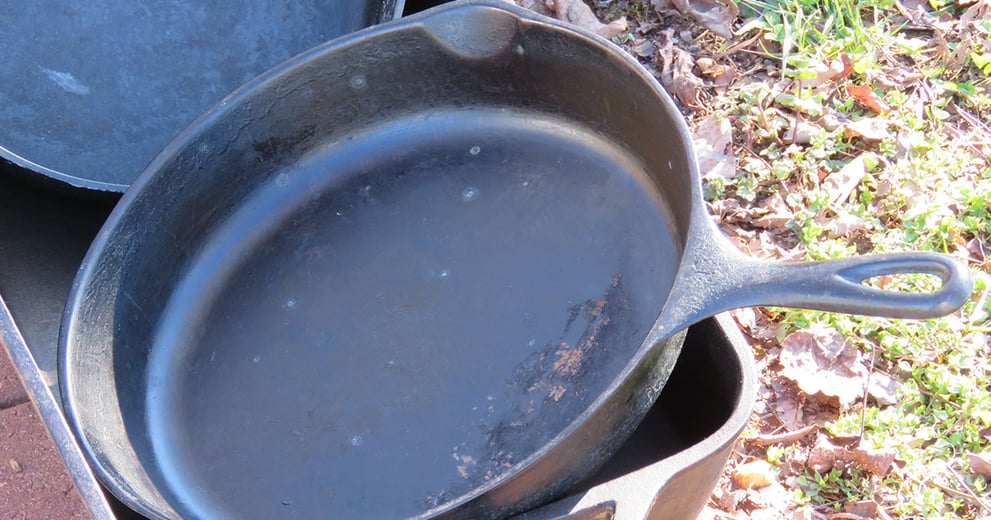
Some cast iron is available pre-seasoned, but if not, wash thoroughly with hot, soapy water and scrub with a stiff brush. Coat with vegetable oil and place in a heated oven or on a grill at approximately 350°F. Leave for one hour to properly season. After this, do not wash with soap. Scrape out any residue after cooking and rinse with water while warm. Wipe dry to remove water and any remaining food particles.
In the event that cast iron rusts or has to be washed to remove caked on foodstuff, you will need to re-season it. Cast iron cookware with lids should be stored with a folded paper towel under the lid to allow air circulation to avoid rust.
The more you use cast iron, the better it will cook. It is a wonderful way to cook and food prepared in it will impress your family and friends with its excellent taste. You can find many tasty recipes for cast iron cooking online and also in the Lodge booklet mentioned above.
Traditional Cooking with Soapstone
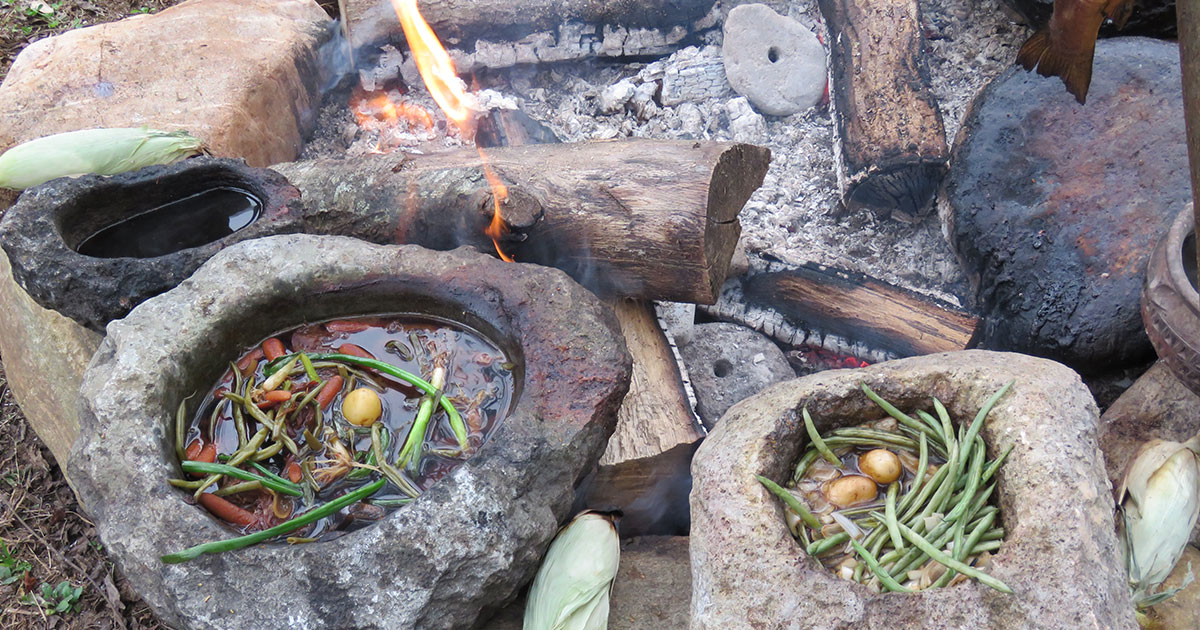
Recently, I had the pleasure of meeting Barry Crawford who was presenting a cooking demonstration at Hagood Mills. Hagood Mills is a historical grist mill in Pickens County, SC. In addition to grinding cornmeal and grits in the traditional grist mill, they sponsor all manner of folk craft such as blacksmithing, quilt making, flint knapping, traditional mountain music, native American cultural events and more.
Mr. Crawford told me he has gathered more than 40,000 artifacts throughout his life. He first became interested by hunting artifacts with his father when he was 6. That and other historical pursuits have become a passion with him and now he maintains a website that details historical information about Pickens, SC.
His first exposure to primitive soapstone cookware was many years ago when he found half of a soapstone cooking vessel in Lake Keowee when the water was low. Later he found cooking stones in Lake Murray. These finds led to his interest in cooking with soapstone and other historical pursuits.
Traditionally, soapstone was used by native Americans and other primitive cultures. Soapstone is easily worked when compared with other types of stone. It is non-porous and has tremendous heat absorption and holding characteristics.
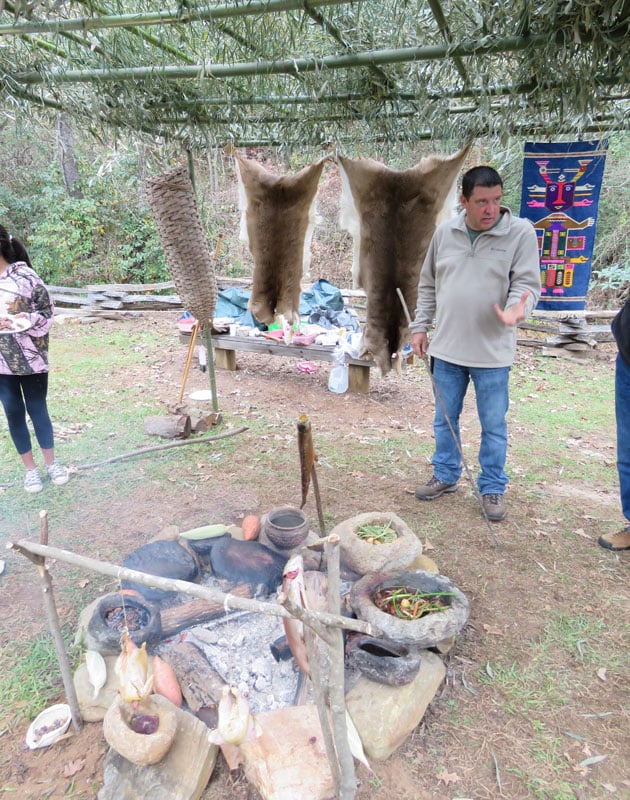
Mr. Crawford now has a collection of 18 complete soapstone cooking vessels that he has found and five of these are used for his primitive cooking demonstrations. He cooks soups and stews in soapstone bowls and marinated venison on soapstone rock slabs tilted toward the fire. Once the soapstone is heated, it only takes a short time for the venison to cook. We sampled it at Hagood Mills and found it delicious. Whole chickens were suspended on cords near the fire, spinning slowly to cook on all sides. Whole trout were placed on spits near the fire to smoke and cook.
Another method demonstrated by Mr. Crawford was to place small blocks of soapstone with holes bored in the center into the coals of the fire. After they were heated, he would use a long stick of green sourwood to push into the holes of the blocks and place them into a nearby pot of water. The water would instantly boil. This method could be used to cook stews, soup or similar items.
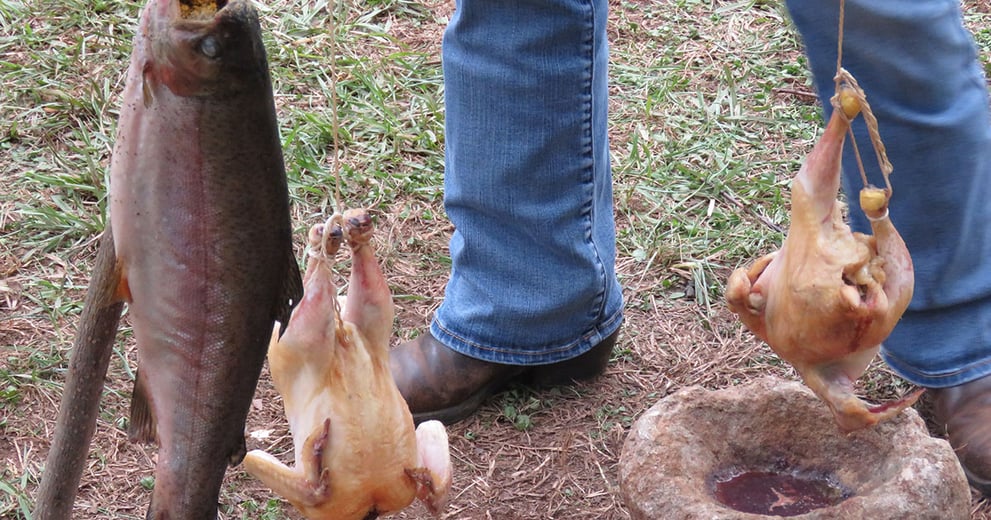
Soapstone has modern applications as well as primitive importance. Due to the resistance of this material to absorption and staining, it is often used as countertops in laboratories. Also, due to the characteristic of absorbing and holding heat for a long time, it is used as lining material for some high-end wood heaters.
Although this is a primitive technique that was used for thousands of years, it is a very effective method of cooking.
All photos courtesy of L. Woodrow Ross.


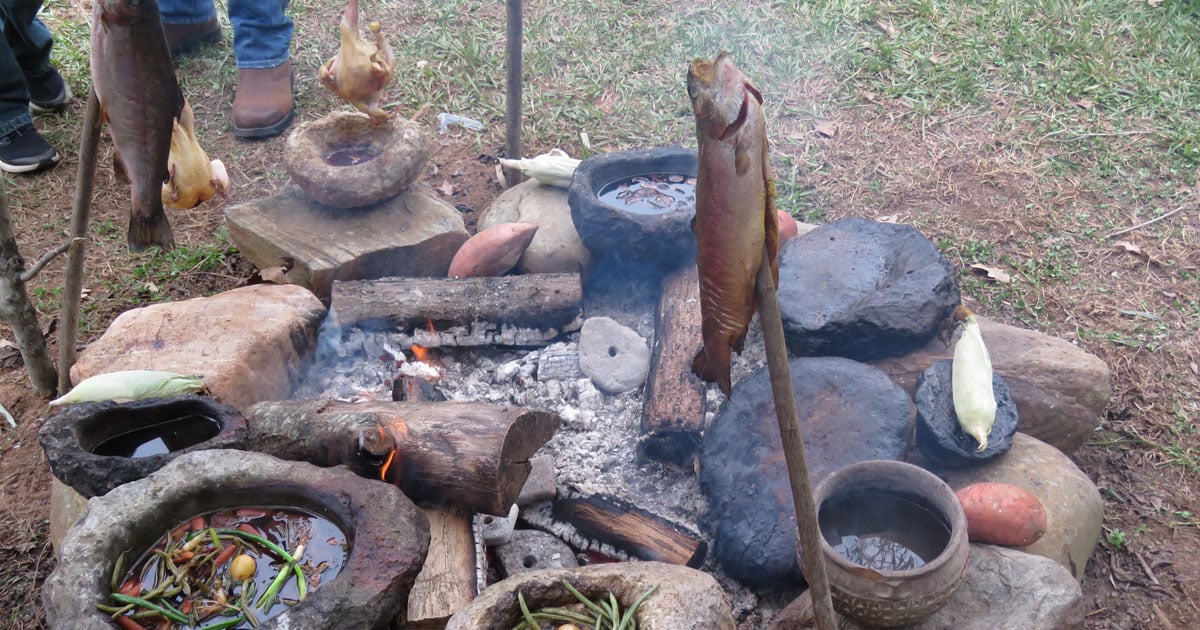

.jpg)


